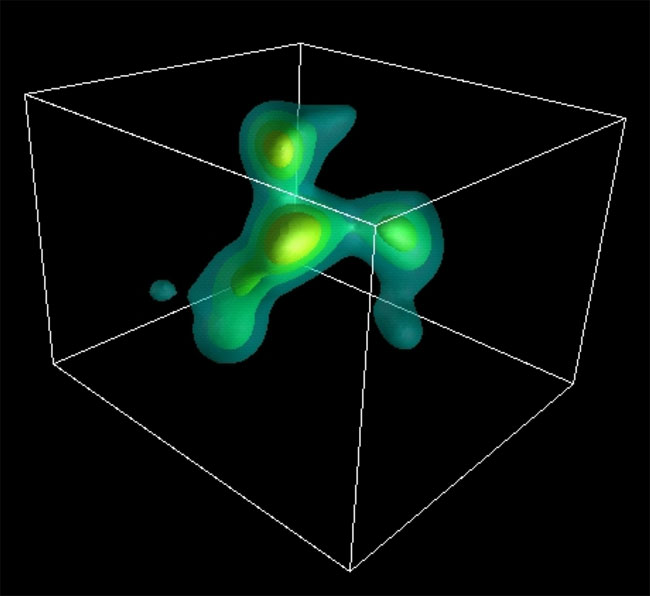
An enormous amoeba-like structure 200 million light-years wide and made up of galaxies and large bubbles of gas is the largest known object in the universe, scientists say.
The galaxies and gas bubbles, called Lyman alpha blobs, are aligned along three curvy filaments that formed about 2 billion years after the universe exploded into existence after the theoretical Big Bang. The filaments were recently seen using the Subaru and Keck telescopes on Mauna Kea.
The galaxies within the newly found structure are packed together four times closer than the universe's average.
Some of the gas bubbles are up to 400,000 light years across, nearly twice the diameter of our neighboring Andromeda Galaxy. Scientists think they formed when massive stars born early in the history of the universe exploded as supernovas and blew out their surrounding gases. Another theory is that the bubbles are giant gas cocoons that will one day give birth to new galaxies.
The finding will give researchers new insight into what the structure of cosmos looks like at the largest scale.
"Something this large and this dense would have been rare in the early universe," said study team member Ryosuke Yamauchi from Tohoku University.
"The structure we discovered and others like are probably the precursors of the largest structures we see today which contain multiple clusters of galaxies," Yamauchi said.
Breaking space news, the latest updates on rocket launches, skywatching events and more!
- The Strangest Things in Space
- Giant Bubble Bullies Our Space
- Ancient Cosmic Superstructure Defies Theory
- Cosmologists Stretch to Explain Birth of Galaxies
- Top 10 Star Mysteries
Ker Than is a science writer and children's book author who joined Space.com as a Staff Writer from 2005 to 2007. Ker covered astronomy and human spaceflight while at Space.com, including space shuttle launches, and has authored three science books for kids about earthquakes, stars and black holes. Ker's work has also appeared in National Geographic, Nature News, New Scientist and Sky & Telescope, among others. He earned a bachelor's degree in biology from UC Irvine and a master's degree in science journalism from New York University. Ker is currently the Director of Science Communications at Stanford University.
